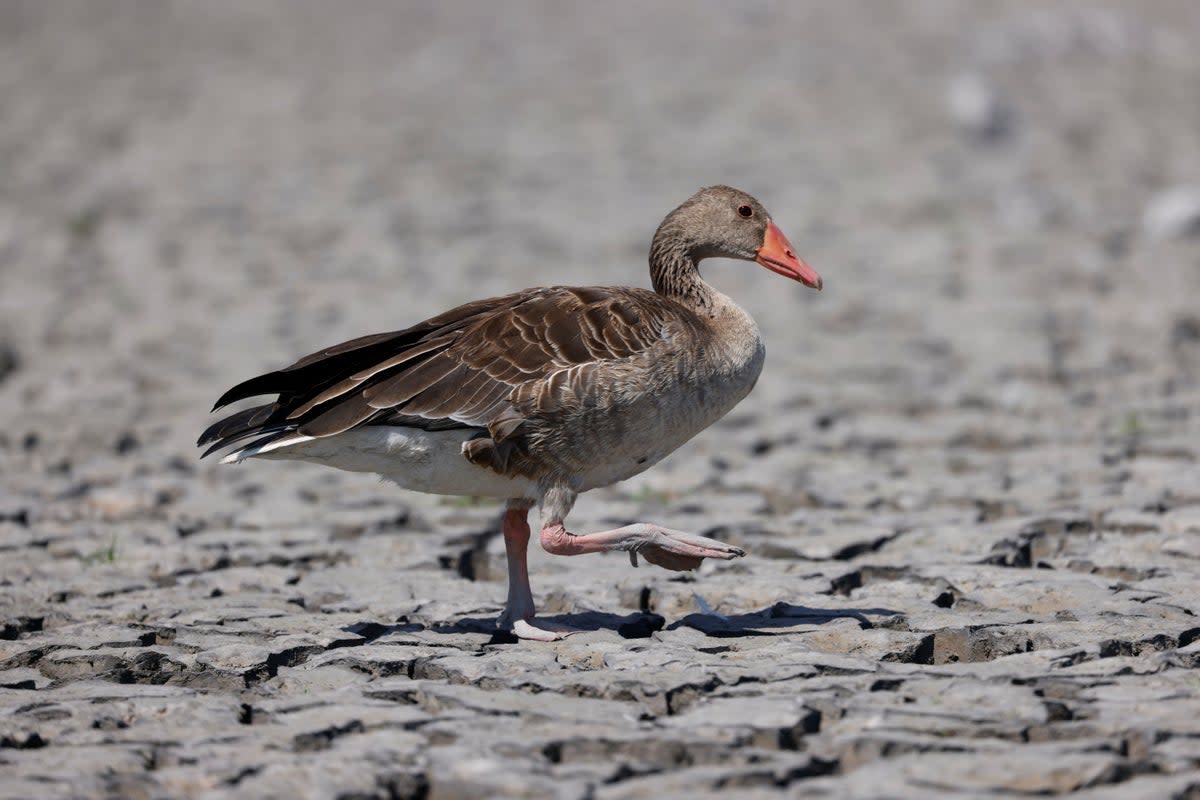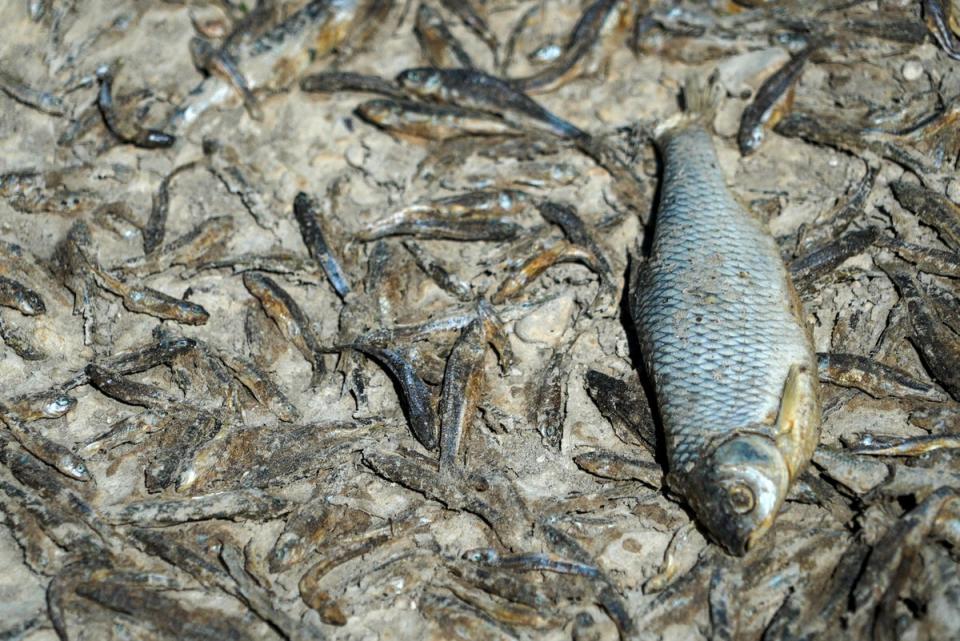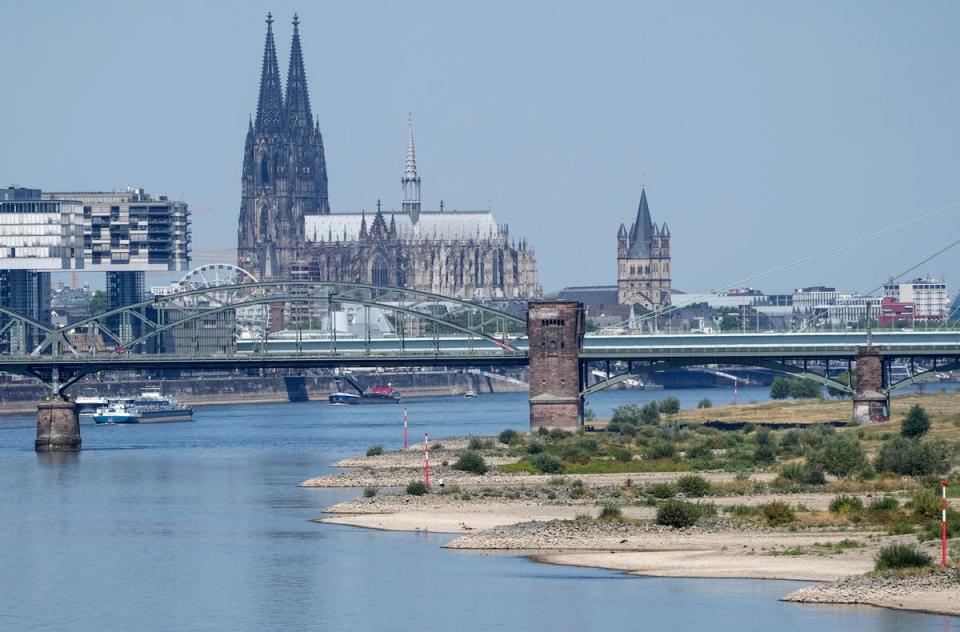Europe drought could be ‘worst’ in 500 years

Europe could be experiencing its worst drought in 500 years, a leading scientist has warned.
Andrea Toreti, a senior researcher at the European Drought Observatory, said this year’s dry conditions will worsen and will most likely eclipse the unprecedented drought of 2018.
There is “very high risk” that the current lack of rainfall in western and central Europe will continue for the next three months, he said.
The warning came as the European Commission’s Joint Research Centre (JRC) predicted that the drought could end up affecting 47 per cent of the continent.
As a result of scorching temperatures, water levels have plummeted across Europe, leading some authorities to impose restrictions on water use.
In France’s Burgundy region, white dust and dead fish now line what used to be the River Tille’s watercourse.
Walking down its 15-metre-wide dried-up riverbed in the French town of Lux, the conservationist Jean-Philippe Couasne reeled off the species of fish – including trout – that had died.
“It’s heartbreaking,” he said, noting that 8,000 litres of water per second usually flowed through the area.
The river “will continue to empty” and “all fish will die”, he added. “These are species that will gradually disappear.”

Jean-Pierre Sonvico, the head of the regional Federation for Fishing and Protection of the Aquatic Environment, said diverting fish to other rivers would not solve the problem, as they are also adversely affected by the drought.
“Yes, it’s dramatic because what can we do? Nothing,” he said. “We’re waiting, hoping for storms with rain, but storms are very local so we can’t count on it.”
This year’s drought is being caused by climate change, the meteorologist Peter Hoffmann, from the Potsdam Institute for Climate Impact Research (PIK), said.
“It’s just that in summer we feel it the most,” he said. “But actually the drought builds up across the year.”
La Loire, août 2022.
Aussi glaçant que rageant.
(📸 @DubrayFranck) pic.twitter.com/R5Z6lkCcqO— Mickaël Correia (@MickaCorreia) August 10, 2022
Climate change is also exacerbating conditions as hotter temperatures speed up evaporation, thirsty plants take in more moisture and reduced snowfall in the winter limits supplies of fresh water available for irrigation in the summer.
As well as threatening aquatic species, dwindling water levels are putting a strain on the farming and transport sectors.
Europe’s yield of maize, sunflowers and soya is expected to fall significantly this year because of a lack of rain, the EU has said.
The drought has caused some European countries to impose restrictions on water usage, and shipping is endangered on the Rhine and the Danube rivers.
The Rhine, Germany’s biggest waterway, is forecast to reach critically low levels in the coming days.
Authorities say it could become difficult for many large ships to safely navigate the river at the city of Kaub, roughly midway between Koblenz and Mainz.
“Industries that depend on inland shipping and transport on the Rhine are of course affected, as there’s less transport capacity for raw materials or finished products,” said Bastian Klein of the German Federal Institute of Hydrology (BfG).

In Serbia, authorities have started to dredge the Danube’s waterway to allow boats to keep operating. In neighbouring Hungary, wide parts of Lake Velence near Budapest have turned into patches of dried mud, beaching small boats.
And stretches of the Po, Italy’s longest river, are so low that barges and boats that sank decades ago are resurfacing.
The dry conditions have also exacerbated this year’s wildfires. More than 1,000 firefighters were still battling to contain a “monster” wildfire tearing through the southwest of France for a third day on Thursday.
Additional reporting by AP

